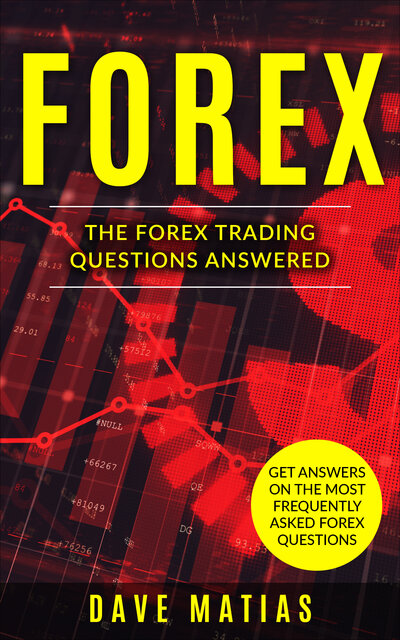The Forex market can be highly unpredictable, with rapid price fluctuations and volatile trading conditions. Traders who navigate this dynamic environment understand that success extends beyond mere technical analysis or fundamental knowledge.
To truly excel in forex trading, one must delve into the realm of psychology—the underlying driving force behind every trading decision.
The human mind plays a pivotal role in the forex market, shaping the outcome of trades and determining overall profitability.
Emotions, cognitive biases, and behavioral patterns all influence trading decisions, often leading to both triumphs and pitfalls. Recognizing and mastering these psychological factors is imperative for traders who seek consistent success.
This article aims to delve into the intricate psychology of forex trading, uncovering the underlying principles and offering practical insights to enhance trading psychology.
By understanding the psychological aspects at play, traders can fine-tune their mindset, improve decision-making, and ultimately increase their chances of winning in the highly competitive forex market.
Whether you are a novice trader seeking a solid foundation or an experienced professional looking to refine your psychological approach, this article will provide valuable forex trading psychology tips and techniques to help you navigate the complex world of FX trading with confidence.
What Is The Psychology Behind Forex Trading
Definition and importance of trading psychology:
Trading psychology refers to the psychological factors and mindset that influence trading decisions in the forex market. It encompasses understanding one’s emotions, cognitive biases, and behavioral patterns when engaging in trading activities.
The significance of trading psychology lies in the fact that even the most technically proficient traders can falter if they neglect to address their psychological state. Developing strong trading psychology is crucial for maintaining discipline, managing emotions, and making rational decisions amidst the volatility and uncertainty of the forex market.
The Role of Emotions in forex trading:
Emotions play a significant role in forex trading, often influencing the outcome of trades. Fear and greed are the two primary emotions that traders experience. Fear can lead to hesitation, causing traders to miss profitable opportunities or exit trades prematurely.
On the other hand, greed can drive traders to take excessive risks or hold onto losing positions in the hope of a turnaround. Managing emotions such as fear, greed, and even overconfidence is essential to maintaining a balanced and rational approach to trading.
Cognitive biases and their impact on trading decisions:
Cognitive biases are inherent mental shortcuts or patterns of thinking that can cloud judgment and impact trading decisions. Traders often fall victim to biases such as confirmation bias, where they seek information that supports their existing beliefs, and ignore contrary evidence.
Anchoring bias occurs when traders rely too heavily on initial information, leading to distorted perceptions of market trends. These biases can lead to flawed analysis, poor risk management, and ultimately, negative trading outcomes. Recognizing and mitigating cognitive biases is vital for making objective and informed trading decisions.
The fear of missing out (FOMO) and its consequences:
The fear of missing out (FOMO) is a psychological phenomenon that can significantly impact forex trading. When traders succumb to FOMO, they may enter trades hastily or chase after the latest market trends without conducting the proper analysis.
This impulsive behavior can lead to poor entries, increased risk exposure, and potential losses. Overcoming FOMO requires discipline and a strategic approach to trading, focusing on a well-defined trading plan rather than capitulating to impulsive actions based on the fear of missing out on potential profits.
Overcoming the urge to revenge trade:
Revenge trading occurs when traders attempt to recoup losses by engaging in impulsive and high-risk trades. It is driven by emotions such as frustration, disappointment, or a desire for immediate reward.
Revenge trading often leads to further losses and a downward spiral of emotional decision-making. To overcome the urge to revenge trade, traders must recognize the emotional triggers, take a step back to reassess their strategy, and maintain discipline by sticking to their predefined risk management and trading plan.
By focusing on consistency and long-term profitability rather than seeking instant recovery, traders can avoid the detrimental effects of revenge trading.
Mastering trading psychology is a continual process that requires self-awareness, emotional control, and the ability to make objective decisions based on sound analysis. In the next section, we will explore practical tips to improve forex trading psychology and enhance trading performance.
How Can I Improve My Forex Trading Psychology
Self-awareness and emotional intelligence in trading:
Improving forex trading psychology begins with self-awareness and emotional intelligence. Traders must understand their own emotions, strengths, and weaknesses to make informed decisions.
Practicing self-reflection, recognizing emotional triggers, and managing emotions effectively is essential. Emotional intelligence helps traders stay calm under pressure, make rational decisions, and avoid impulsive actions driven by the very same; fear or greed.
Maintaining a disciplined approach:
Discipline is a cornerstone of successful trading psychology. It involves following a set of predefined rules consistently and avoiding impulsive deviations. Traders should adhere to their trading plan, entry and exit strategies, risk management rules, and trade execution procedures. A disciplined approach helps eliminate emotional biases and promotes an organized and systematic trading mindset.
The importance of setting realistic expectations:
Setting realistic expectations is vital for maintaining a healthy trading psychology. Unrealistic expectations, such as expecting continuous profits or overnight success, can lead to frustration, disappointment, and impulsive decision-making. Traders should understand that losses are a natural part of this Game and focus on long-term profitability. Realistic expectations allow for a more objective assessment of performance and prevent emotional swings.
Developing a trading plan and sticking to it:
A well-defined trading plan is a fundamental tool for improving anyone’s trading psychology. It outlines the trader’s strategy, risk tolerance, and criteria for entering and exiting trades. A trading plan acts as a fail-safe mechanism reducing the influence of emotions and impulsive decision-making. Traders should create a comprehensive plan based on thorough analysis and follow it rigorously, making adjustments only when necessary.
Effective risk management strategies:
Implementing effective risk management strategies is crucial for protecting capital and maintaining a positive trading attitude. Traders should determine the appropriate risk-to-reward ratios on any given trade, set stop-loss orders to limit potential losses, and avoid overexposing their trading accounts. Risk management helps traders stay in control, manage emotions, and reduce the psychological stress associated with trading.
Utilizing proper position sizing techniques:
Proper position sizing is another key aspect of forex trading psychology. Traders should calculate their position sizes based on their risk tolerance, account size, and specific trade setup. Position sizing helps control risk and prevent substantial losses that can negatively impact trading psychology. By allocating the appropriate amount of capital to each trade, traders can limit the psychological pressure associated with significant losses.
Improving forex trading psychology requires a proactive approach that encompasses self-awareness, discipline, realistic expectations, a well-defined trading plan, effective risk management, and proper position sizing. Traders who actively work on enhancing their psychological approach can develop the resilience and mental fortitude necessary to navigate the challenges of the forex market.
In the following section, we will explore strategies to cultivate winning trading psychology and optimize trading performance.

How to Win Trading Psychology
Cultivating a growth mindset:
A growth mindset is a belief that abilities and intelligence can be developed through dedication, hard work, and learning from mistakes. In trading, cultivating a growth mindset allows traders to embrace challenges, persist in the face of setbacks, and constantly seek improvement. By viewing losses and mistakes as opportunities to learn and grow, traders can overcome fear and self-doubt, adapt to changing market conditions, and remain open to new strategies and ideas.
Embracing losses as learning opportunities:
Losses are an inevitable part of trading. However, instead of viewing losses as failures, successful traders perceive them as valuable learning opportunities. They understand that each loss carries important lessons about market dynamics, risk management, and trading strategies.
By analyzing trades, identifying mistakes, and adjusting their approach, FX speculators can gradually refine their skills and increase their chances of success. Embracing losses with a learning mindset helps them to detach emotionally from trades and make objective decisions based on analysis and factual evidence.
Practicing patience and resilience:
Patience and resilience are vital qualities for traders. Forex markets can be very unpredictable, and success often requires waiting for the right opportunities to present themselves.
Patience allows traders to avoid impulsive and emotional decisions driven by short-term fluctuations. It enables them to stick to their trading plans, wait for favorable setups, and only then execute trade ideas.
Resilience, on the other hand, helps traders bounce back from losses and setbacks. It involves the ability to stay focused and maintain confidence in one’s trading approach, even during challenging periods.
Avoiding excessive trading and over-analysis:
Overtrading and over-analysis are common pitfalls that can hinder trading success. Overtrading, driven by impatience or the desire to recover losses quickly, almost always leads to poor decision-making and increased transaction costs.
Traders must exercise discipline and only trade when the market conditions align with their strategy. Similarly, over-analysis, characterized by excessive information gathering and analysis paralysis, can lead to missed opportunities and confusion.
Traders should identify key elements of their strategy and focus on relevant information to avoid being overwhelmed by excessive data.
Seeking continuous education and self-improvement:
The financial markets are dynamic, and traders need to adapt and evolve along with them. Seeking continuous education and self-improvement is vital for staying ahead of the curve. Traders can enhance their skills and knowledge by attending trading seminars, workshops, and webinars, reading books and research papers, and engaging with other experienced traders.
Keeping up with the latest developments, learning new strategies, and refining existing techniques can provide traders with a competitive edge and the confidence to navigate ever-changing market conditions.
The role of positive affirmations and visualization techniques:
Positive affirmations and visualization techniques can significantly impact a trader’s mindset and performance. By repeating positive statements and visualizing successful trades, forex speculators can reinforce confidence and manage emotions effectively.
Affirmations can help traders overcome self-doubt and negative thinking patterns, while visualization allows them to mentally rehearse successful trading scenarios, increasing their belief in achieving those outcomes.
These underestimated techniques, when used consistently, can shape a positive mindset, reduce stress, and enhance overall trading performance.
Case Studies: Examples of Forex Trading Psychology
Analyzing successful traders’ Mindsets and psychological traits:
Studying the mindset and psychological traits of successful traders can provide valuable insights into what contributes to their consistent profitability.
By examining their approach to risk management, decision-making, and emotional control, aspiring traders can learn important lessons.
Successful traders often exhibit traits such as discipline, patience, adaptability, and the ability to stay calm under pressure. They understand the importance of maintaining a long-term perspective and avoiding impulsive actions driven by fear or greed.
Examining how psychology impacted specific trading scenarios:
Psychology plays a crucial role in specific trading scenarios, and examining its impact can be enlightening. For example, during periods of market volatility, emotions can run high, causing traders to make irrational decisions based on fear or excitement.
In such situations, maintaining emotional control and adhering to predetermined strategies become critical.
Additionally, when faced with consecutive losses, traders may experience self-doubt and frustration, which can lead to impulsive trading or abandoning their strategies. Understanding the psychological factors at play in different trading scenarios helps traders develop effective coping mechanisms and decision-making processes.
Lessons learned from the experiences of seasoned traders:
Seasoned traders have often experienced both successes and failures throughout their trading careers. Their experiences offer valuable lessons for traders looking to improve their trading psychology.
Some common lessons include the importance of risk management, the need for a well-defined trading plan, the value of continuous learning and adaptation, and the significance of maintaining emotional balance.
Seasoned traders emphasize the need to focus on the process rather than the outcome, as outcomes are not always within a trader’s control.
For example, a trader might be right on a currency direction, even project the take profit targets with the help of the Fibonacci extension tool, however, a trader will never know exactly how the target is going to be achieved.
Meaning market participants may pull the currency down, then continue with the original direction, or they might lock the price action in a range, and then move it to hit the target. There are so many scenarios of how price action might come to the profit target that it is practically impossible to predict them all.
Bottom line, analyzing the mindset and psychological traits of successful traders can guide aspiring traders in developing their own winning psychology. Understanding and addressing common psychological challenges can help traders navigate the ups and downs of the markets effectively.
Examining the impact of psychology in specific trading scenarios offers valuable lessons on emotional control, decision-making, and risk management.
By learning from the experiences of seasoned veterans, beginners can gain a deeper understanding of the psychological aspects of trading and develop strategies to improve their own performance.

Common Pitfalls and How to Overcome Them
Avoiding impulsive trades and chasing after profits:
Impulsive trades and chasing after profits are common pitfalls that can lead to poor trading outcomes. Impulsive trades occur when traders act without proper analysis or in response to short-term market fluctuations.
Chasing after profits refers to the tendency to enter trades based on recent gains without considering the underlying market conditions. To overcome these pitfalls, traders should cultivate patience and discipline.
They can develop a trading plan that includes clear entry and exit criteria based on thorough analysis and stick to it. Applying strict risk management rules, such as setting stop-loss orders, or more advanced techniques such as hedging, can also help avoid impulsive actions driven by the desire for quick profits.
Dealing with self-doubt and managing psychological stress:
Self-doubt and psychological burnout can significantly impact trading performance. Traders may question their abilities, experience anxiety, or become overwhelmed by the pressure to succeed.
To overcome these challenges, it is crucial to develop self-awareness and practice self-care. Traders can cultivate self-confidence by focusing on their strengths and past successes.
Developing a routine that includes physical exercise, relaxation techniques, and adequate rest can help manage stress levels. Seeking support from mentors, participating in trading communities, and engaging in positive self-talk can also contribute to building resilience and managing self-doubt effectively.
Recognizing and overcoming analysis paralysis:
Analysis paralysis occurs when traders become overwhelmed by excessive information, leading to indecision and missed trading opportunities. To overcome analysis paralysis, traders can employ several strategies:
Define key indicators and focus on relevant information
Identify the key factors that influence your trading decisions and concentrate on gathering information related to those factors. Filter out unnecessary noise and avoid getting caught up in minute details that may hinder your decision-making process.
Set a time limit for analysis
Establish a specific timeframe for conducting your analysis. This helps prevent analysis from dragging on indefinitely and ensures that you make timely trading decisions. By setting a deadline, you force yourself to prioritize information and make informed choices based on the available data.
Utilize a checklist or trading plan
Create a checklist or trading plan that outlines your criteria for entering and exiting trades. This provides a structured framework and helps you focus on the essential aspects of your analysis. By following a predefined plan, you can mitigate the risk of over-analyzing and reduce the likelihood of analysis paralysis.
Practice decision-making exercises
Engage in decision-making exercises to improve your ability to make prompt and confident choices. Start with smaller decisions and gradually work your way up to more significant trading decisions. By repeatedly making decisions and evaluating the outcomes, you build confidence in your judgment and become more adept at overcoming analysis paralysis.
Seek a second opinion or external perspective
When you find yourself trapped in analysis paralysis, seeking the input of others can offer a fresh perspective. Consult with fellow traders, mentors, or professionals in the field. They can provide insights, challenge your assumptions, and offer guidance to help you break free from the analysis paralysis cycle.
Trust your instincts and take action
At times, it is essential to trust your instincts and make a decision based on your experience and intuition. While analysis and research are crucial, it is important to recognize that “perfect” information may not always be attainable. Embrace a calculated risk-taking approach and remember that taking action, even with imperfect information, is often better than being immobilized by analysis paralysis.
By implementing these strategies, traders can break free from analysis paralysis and make informed trading decisions in a timely manner. Remember, trading success often lies in finding the right balance between analysis and action.
Conclusion
In the world of forex trading, understanding and mastering trading psychology is just as important as developing technical skills. A strong psychological mindset can make the difference between success and failure.
Throughout this article, we have explored various aspects of trading psychology, including cultivating a growth mindset, embracing losses as learning opportunities, practicing patience and resilience, avoiding common pitfalls, seeking continuous education, and utilizing positive affirmations and visualization techniques.
It is crucial to reiterate the significance of understanding and mastering trading psychology. While technical analysis and market knowledge are essential, they are incomplete without a solid psychological foundation. By recognizing the impact of emotions, biases, and cognitive tendencies on trading decisions, FX speculators can develop the necessary discipline and self-awareness to navigate the markets successfully.
We encourage readers to implement the tips and strategies provided in this article. Take the time to reflect on your mindset, strengths, and weaknesses as a trader. Cultivate a growth mindset that embraces continuous learning and improvement. Embrace losses as valuable learning opportunities and avoid impulsive trades driven by greed or fear. Practice patience, resilience, and emotional control to navigate the inevitable ups and downs of trading.
Remember that forex trading is a journey, and developing a winning trading psychology requires ongoing effort and self-reflection. Seek out educational resources, engage with other traders, and learn from experienced professionals. Continuously refine your trading plan, risk management strategies, and decision-making processes. By dedicating yourself to improving your trading psychology, you increase your potential for success in the forex market.
In closing, success in forex trading is not solely determined by technical analysis or luck. It hinges on the right psychological mindset. By understanding and mastering trading psychology, you gain a competitive edge in the markets. With the proper psychological foundation, you have the potential to achieve your trading goals and thrive in the dynamic world of forex trading.





